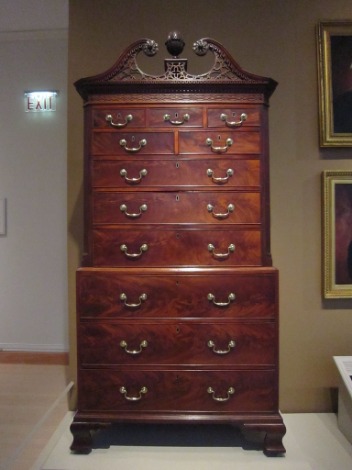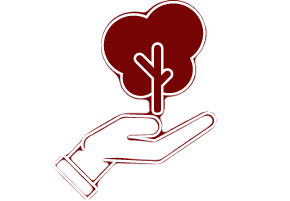
The pattern is flexible and can break out up or down, and is a continuation or a reversal pattern. The falling wedge appears in a downtrend and indicates a bullish reversal. A descending triangle appears after a bearish trend with a probable breakdown continuation. The falling wedge appears in a downtrend but indicates a bullish reversal. A breakout refers to price movement above a resistance area or below a support area.
Over time, your ability to discern where the line should be placed will improve through repetition. Chris Douthit, MBA, CSPO, is a former professional trader for Goldman Sachs and the founder of OptionStrategiesInsider.com. His work, market predictions, and options strategies approach has been featured on NASDAQ, Seeking Alpha, Marketplace, and Hackernoon. The double bottom occurs when there are two troughs at the same height, indicating that sellers are in a weaker position than they were. For example, an uptrend supported by enthusiasm from the bulls can pause, signifying even pressure from both the bulls and bears, then eventually give way to the bears. Adam Hayes, Ph.D., CFA, is a financial writer with 15+ years Wall Street experience as a derivatives trader.
Formation of Ascending and Descending Triangle Pattern
In this case, we’re going to be looking for the flat bottom to get conquered by the bears. The potential support breakout can signal a powerful trend reversal. Typically, the descending triangle is more powerful when traded in the descending triangle stock context of a trend. It’s also more powerful when traded in the direction of the prevailing trend. As we stated before, this chart pattern operates on a one-minute chart, a five-minute chart, all the way up to higher time frames.
2 Stocks that Historically Rise in the Fall – Nasdaq
2 Stocks that Historically Rise in the Fall.
Posted: Wed, 23 Aug 2023 07:00:00 GMT [source]
Like other chart patterns, ascending triangles indicate the psychology of the market participants underlying the price action. In this case, buyers repeatedly drive the price higher until it reaches the horizontal line at the top of the ascending triangle. The horizontal line represents a level of resistance—the point where sellers step in to return the price to lower levels. An ascending triangle is generally considered to be a continuation pattern, meaning that the pattern is significant if it occurs within an uptrend or downtrend. Once the breakout from the triangle occurs, traders tend to aggressively buy or sell the asset depending on which direction the price broke out.
Everything about Ascending & Descending Triangle Pattern
In some cases, the stock may break out of the triangle and continue in an upward trend. There are many patterns used by traders—here is how patterns are made and some of the most popular ones. Traders should watch for a volume spike and at least two closes beyond the trendline to confirm the break is valid and not a head fake.
- Triangles reveal an opportunity to short and suggest a profit target, so both triangles are just different takes on a potential breakdown.
- The price may move out of the pattern only to move back into it, or the price may even proceed to break out the other side.
- Instead of a flat support level, you can see higher lows being formed.
- An ascending triangle is a technical analysis chart pattern that occurs when the price of an asset fluctuates between a horizontal upper trendline and an upward-sloping lower trendline.
- This includes individual stocks, global indices, commodities, Forex, or cryptocurrency.
It is a very popular chart pattern because it clearly shows that the demand for an asset or commodity is weakening. The descending triangle is a notable technical analysis pattern that indicates a bearish market. The pattern’s validity relies on factors such as an established trend, certain properties of the lower horizontal and upper descending trend lines, duration, and volume behavior. Traders should pay attention to volume when trading a descending triangle chart pattern.
Sign up to get daily digests on the stocks that matter to you.
But, they act similarly and can be a powerful trading signal for a trend reversal. The patterns are formed when a price tests the same support or resistance level three times and cannot break through. An ascending triangle is a continuation pattern marking a trend with a specific entry point, profit target, and stop loss level. The resistance line intersects the breakout line, pointing out the entry point. Named because they look like triangles, these patterns connect the beginning of the upper trendline to the beginning of the lower come. The upper line connects the highs while the lower line connects the lows in that security.
The pattern emerges as price bounces off the support level at least twice. The completion of the pattern occurs after the end of a retracement in a downtrend. After a breakout from a descending triangle, the target price is calculated by measuring the widest distance of the pattern and subtracting it from the breakout point at the resistance line. TradingView can automatically measure a descending triangle pattern to set a price target. Alternatively, to measure manually, use an arithmetic chart and plot the distance between the triangle’s apex and base. This distance will be the future price target which you should annotate on the chart.
Descending triangles occur more frequently on 15-minute and hourly charts. However, the descending triangle reversal pattern can potentially reward you with bigger profits if traded https://g-markets.net/ in the right context. We only trade the descending triangle reversal pattern when this price formation develops at the end of a bullish trend, and in the context of an uptrend.
- Traders can experiment with their own settings on the period of the moving average; this depends on the time period that you use.
- Typically, traders that leverage this tool monitor the stock’s price, waiting for a breakout.
- Traders use triangles to highlight when the narrowing of a stock or security’s trading range after a downtrend or uptrend occurs.
- The illustration below shows the distance from A to B can be transferred lower down, from C to D, in order to project a possible take profit level.
Even though the price doesn’t decline past this level, the reaction highs continue to decline. It’s these lower highs that indicate increased selling pressure and give the descending triangle its bearish bias. There are currently two trading platforms offering descending triangle scanning and screening. TrendSpider and FinViz enable complete market scanning for descending triangles. Finviz is a good free pattern scanner, whereas TrendSpider enables full backtesting, scanning, and strategy testing for chart patterns.
What are the key takeaways of a descending triangle pattern?
It’s easy to understand how the demand gets drained during the development of the descending triangle. The reversed version of the descending triangle is the ascending triangle pattern that we have extensively talked about. A descending triangle bearish pattern built with only two highs and two lows is generally considered less reliable than one with more highs and lows. As a result, when the price breaks out below the $58 support line, a short position is entered with a price target of $50.
Should Best Buy Be in Your Cart for the Holiday Season? – MarketBeat
Should Best Buy Be in Your Cart for the Holiday Season?.
Posted: Wed, 06 Sep 2023 12:20:16 GMT [source]
That is why it is important to set target prices and stop-losses in order to limit losses in case the stock’s price moves in the opposite direction. When trading a descending triangle chart pattern, traders should look for a break of the lower trend line. Traders should also set a stop loss and take profit levels to protect their position. Often a bullish chart pattern, the ascending triangle pattern in an uptrend is not only easy to recognize but is also a slam-dunk as an entry or exit signal.
There are so many stocks in which this chart pattern is formed and it is difficult for traders to look at the charts of more than 500 stocks for finding this pattern. The formation of a triangle pattern includes at least five touches of support and resistance. It involves prices moving in the tighter and tighter range in a triangle pattern which shows the battle between the bears and bulls. Price patterns are often found when the price “takes a break,” signifying areas of consolidation that can result in a continuation or reversal of the prevailing trend. The double top or bottom are reversal patterns, signaling areas where the market has made two unsuccessful attempts to break through a support or resistance level. The “handle” forms on the right side of the cup in the form of a short pullback that resembles a flag or pennant chart pattern.
A price pattern is a recognizable configuration of price movement identified using a series of trendlines and/or curves. The breakout generally occurs in the direction of the existing trend. But, if you are looking for an entry point following a symmetrical triangle, jump into the fray at the breakout point.

Let’s examine each individual part of the pattern and then look at an example. In the chart above, you can see the height/depth of the descending triangle is equal to the price target. The descending triangle, often referred to as the ‘falling triangle’, has an inherent measuring technique that can be applied to the pattern to gauge likely take profit targets. The descending triangle is fairly easy to spot once traders know what to look for.
This Chart Pattern Is a Bearish Continuation Pattern
Ascending triangles can also form at the reversal of a downtrend but are more commonly viewed as a bullish continuation pattern. This simple chart pattern can be spotted on long-term charts and short-term charts. It doesn’t matter what your trading style is; whether you are a swing trader or a day trader.
The breakout of the prices is confirmed when the prices break from the support level with volume and continue to move down. When the price breakout is above the 200-day simple moving average, the busted triangle sees a price increase of 13% versus those below the 200-day simple moving average. Horizontal or slightly sloped trendlines can be drawn connecting the peaks and troughs between the head and shoulders, as shown in the figure below. A bearish pennant is a pattern that indicates a downward trend in prices. In a bearish pattern, volume is falling, and a flagpole forms on the right side of the pennant. Think of the lower line of the triangle, or lower trendline, as the demand line, which represents support on the chart.
